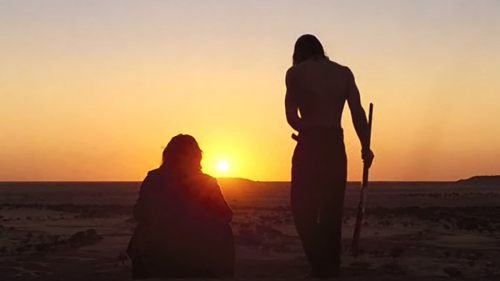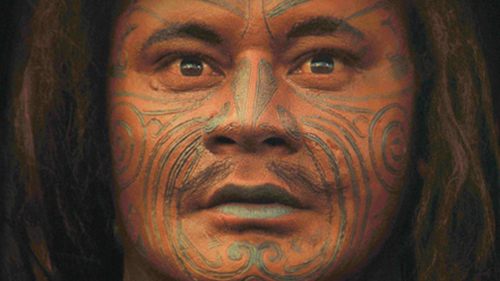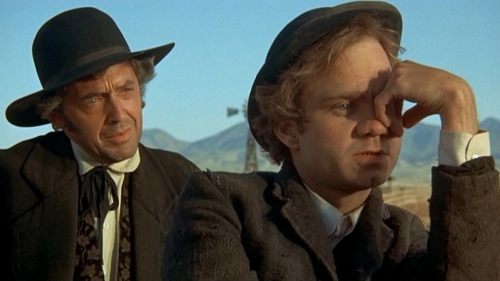The Wrong Sergio - A Celebration Of Sergio Corbucci
When Burt Reynolds was asked during talk show interviews about his 1966 film Navajo Joe, he tended to recycle the same story. To hear him tell it, Reynolds saw the international superstardom Clint Eastwood gained by appearing in Sergio Leone’s “Man With No Name” trilogy and headed to Italy to get in on that sweet star-making action. But, as Reynolds said over and over in the punchline to this story, “I got the wrong Sergio.”
He was referring to Navajo Joe’s director, Sergio Corbucci, who made no less than 15 “Spaghetti Westerns” between 1964 and 1975. While it’s true that none of his westerns enjoyed the initial critical acclaim that Leone’s films did, Corbucci’s body of work is in many ways a much more eclectic - and influential - one. Today the sights and sounds from Leone’s classic trilogy feed into a larger pop culture pool that includes parodies and TV commercials. In contrast, Corbucci’s contributions remain a largely uncelebrated wealth of influence and inspiration, despite providing the entire sub-genre - and the two most recent films of Quentin Tarantino - with family-style portions of cinematic iconography.
Starting as a director of Italian “sword & sandal” movies in the 1950s, Corbucci’s first forays into the Western genre actually predate any true Spaghetti Western “movement.” Grand Canyon Massacre (co-directed by Albert Band) was released in Italy a few months before Leone’s A Fistful of Dollars, and Corbucci’s next film, Minnesota Clay, was in Italian theaters two months after Leone’s classic. Fittingly, Minnesota Clay often feels of two worlds. A much more traditional western than most later Italian Westerns, the film also establishes Corbucci’s unusual predilection for maimed antiheroes (its title character is blinded before the finale) and incongruous visuals (the film’s DP was Mario Bava, giving the movie exactly the kind of lurid palette you’d imagine).
With the success of Leone’s A Fistful of Dollars, Corbucci suddenly found himself part of a successful trend. Italian cinema had a long history of mimicking hit films, and after 1964, Westerns that looked and felt “Italian” were the order of the day. Angry, violent oaters with international casts were suddenly in demand, and Corbucci made as many as three Westerns a year to keep up. That’s not to say Corbucci was some mere copycat; rather, this new style of Western seemed to jar loose in him a license to go big and surreal, and he went for it.
Pushing boundaries of style and taste, Corbucci’s westerns took the baton from Leone and ran, offering unique visuals, stomach-churning violence and cynical, often amoral protagonists. Leone’s “Man With No Name” might have woken up Italy’s hunger for an antihero, but Corbucci served up a feast, with anti-heroes who existed not to uphold the law of the land, but to wreak Old Testament vengeance upon corrupt leaders and sadistic villains, two factions who were - in Corbucci’s world - more often than not working together.
Corbucci’s westerns - cheap, haphazardly shot, visually disparate - don’t bear much of a resemblance to one another. When viewed together, however, some commonalities surface: large-scale massacres in which dozens of men are killed at once; scenes of maiming and mutilation, usually visited upon (but not relegated to) the protagonist; and locations that were, at the time, unusual for westerns, creating atmospheres of gloom and dread more in keeping with something out of a 1950s, pre-code comic book.
When Corbucci wanted to set Django in the snow, his producer told him “snow in a western is bad luck - and expensive.” They compromised and agreed on swathing the film’s landscape in fog and mud, a visually unprecedented move for a western. Much of Django’s renown derives from being the launchpad of Franco Nero’s career, and a star is indeed born in the long close-ups Corbucci affords his blue-eyed, 24 year-old actor. But often lost in Nero’s leading man debut is the fact that Django is a watershed moment in the evolution of the Italian Western. The film’s web of alliances, betrayals, and vendettas play bigger, bloodier, and nastier than anything in Leone’s films, and decades of characters using coffins to hide massive amounts of firepower all flow from Django dragging his wooden casket through the mud. The carnage unleashed by opening that coffin (Django’s contains a Gatling gun) earned the film an unprecedented “18” rating in Italy, and Django was denied a certificate altogether in the UK until 1993. Director/film historian Alex Cox credits Corbucci with creating the violent, “unpredictable, murderous universe” of the Spaghetti Western, and when a bandit in Django slices a man’s ear off on-camera before feeding it to him, it’s a hard point to argue.
That universe is expanded upon in The Hellbenders, released the same year as Django. Set immediately after the end of the Civil War, the film eschews traditional protagonists for a group of flat-out murderers, Confederate zealots whose goal is to fund and launch a new civil war at any cost. Led by their father (Joseph Cotten), this band of Rebel brothers ambush a union convoy, steal over a million dollars, and slaughter 30-odd soldiers in the opening scene. As they make their way across the desert, they attempt to keep up the ruse of ex-soldiers escorting a grieving widow to bury her husband (this time the coffin holds the pilfered fortune). Corbucci goes full EC comics here, with black humor, ironic comeuppances and twist endings. Corbucci visiting it all upon his lead characters is kind of extraordinary, though. It’s a bit like a Western film noir, but much more Catholic.
Corbucci got his wished-for snowscape in 1968’s The Great Silence (sometimes called The Big Silence; fittingly, in Italian “grande” means both “big” and “great”). Contrasting with his blindingly white landscapes is just about the blackest plot Corbucci ever committed to celluloid: in a remote mountain town called Snow Hill, bounty hunters prey on “bandits,” in reality sympathetic, starving thieves hiding in the outskirts of town and stealing to eat. When the leader of the bounty hunters (Loco, played with relish by Klaus Kinski) kills the husband of a young woman (Vonetta McGee), she enlists the services of Silence (Jean Louis Trintignant), a hired gun rendered mute years ago by his parents’ killers. Silence faces off against the bounty hunters and the powerful men who hired them, leading to a final showdown against Loco. Then Corbucci damn near upends the entire genre by having his stoic, principled hero (along with every sympathetic character in the film) ruthlessly gunned down during the climactic duel. The evil Loco and his bounty hunter pals ride off into the sunset. The End. It’s devastating, the Western version of Night of the Living Dead (not so coincidentally, released that same year).
The Great Silence is a distillation of all Corbucci’s wonderful contributions to the genre: his visual eccentricity, his penchant for unconventional protagonists, and his political pessimism. He’d continue making Westerns until 1975, some more worthwhile than others (Compañeros is an essential title from his later period), settling into film comedy and TV work until his death in 1990. Thanks to evangelists like Alex Cox and Quentin Tarantino, people are finally rediscovering his work, and when folks see a bounty hunter strapping dead bodies onto a snow-covered stagecoach on the big screen this month, perhaps they’ll be further compelled to seek out the genesis of that imagery. And it won’t be a minute too soon: where Leone’s classic entries enjoy the kind of TLC and accessibility afforded by the latest HD remasters, today many of Corbucci’s films are in danger of the kind of digital extinction that threatens the more obscure corners of exploitation.
As for Burt Reynolds and Navajo Joe? Though Reynolds liked to claim the film was so bad that they only screened it in prisons and airplanes “because the audience couldn’t leave,” Alex Cox called it “the best of all possible Burt Reynolds vehicles.” With its Indian war cry theme song (courtesy Ennio Morricone) and white actors in redface, no one’s going to mistake Navajo Joe for the subtlest piece of entertainment. But thankfully for Corbucci, and for us, going “grande” was not a hanging crime in Italy.



